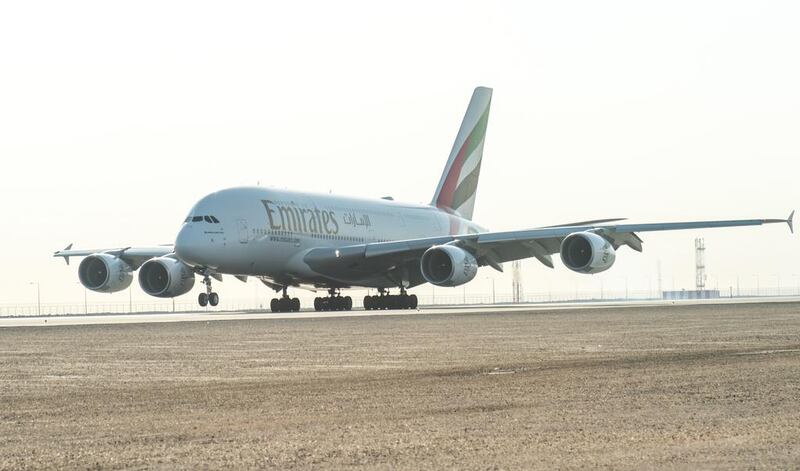Middle East carriers posted a 5.5 per cent increase in passenger traffic last month over Auguist last year, well below the five-year average pace of 11.1 per cent.
The Middle East-to-North America market in particular has been hit by a combination of factors, including the now lifted cabin ban on large portable electronic devices, as well as a wider impact from the proposed travel bans to the US, said the International Air Transport Association (IATA).
Traffic growth on the segment was already slowing in early-2017, in conjunction with an easing in the pace of growth of nonstop services flown by the largest Middle East airlines. Capacity increased 5.1 per cent, with load factor rising 0.3 percentage points to 81.4 per cent.
IATA said global demand (measured in total revenue passenger kilometres or RPKs) climbed 7.2 per cent compared to the year-ago period. At the same time, the upward trend in seasonally-adjusted traffic has eased from that seen at the end of 2016. August capacity (available seat kilometers or ASKs) increased by 6.3 per cent, and load factor climbed 0.7 percentage points to 84.5 per cent, which was just below the record for the month set in 2015.
"Following the strong summer traffic season in the Northern Hemisphere, 2017 is on course to be another year of strong traffic growth. However, some important demand drivers are easing, particularly lower fares. As we head towards the end of the year we still expect growth to continue, but potentially at a slower pace," said Alexandre de Juniac, IATA’s director general and chief executive.
August international passenger demand rose 7 per cent year-on-year. All regions recorded increases, led by airlines in Latin America. Capacity climbed 6.1 per cent, and load factor edged up 0.8 percentage points to 84.5 per cent.
European carriers saw August demand climb 6.9 per cent year-to-year, which was a slowdown from the 7.9 per cent growth recorded in July. International traffic on routes within Europe has slid in recent months, in seasonally-adjusted terms, despite a strengthening regional economic backdrop, IATA said. Traffic conditions on the Europe-Asia route have also softened on a seasonally-adjusted basis. Capacity rose 5.5 per cent, and load factor climbed 1.2 percentage points to 88.3%, which was the highest among regions.
______________
Read more:
Saudi Arabia’s newest no-frills airline gets first aircraft
Airlines' profit rises on global economic uptick and lower costs
China Southern Airline’s 29 per cent profit rise falls short of estimates
______________
Asia-Pacific airlines’ August traffic increased 8.6 per cent compared to the year-ago period, which was an acceleration on the 6.6 per cent rise in July. However, the same trend of softening demand growth on routes within the region was apparent, said the association. Capacity rose 8.3 per cent and load factor inched up 0.2 percentage points to 81.4 per cent.
North American airlines’ international demand rose 5.5 per cent compared to August a year ago, up from 4 per cent growth recorded in July and nearly double the five-year average of 3.1 per cent. However, there are signs that inbound travel to the US is being negatively-impacted by the additional security measures now involved with travelling there. Capacity rose 3.9 per cent, and load factor grew by 1.4 percentage points to 86.6 per cent.
Latin American airlines experienced a 9.3 per cent demand increase, although this was down from the 11.1 per cent recorded in July.
African airlines’ traffic climbed 6.4 per cent as the continent’s two largest economies, Nigeria and South Africa, both exited from economic recessions during the second quarter of the year, IATA said.
Demand for domestic travel climbed 7.6 per cent in August year-on-year, on pace with the 7.5 per cent growth recorded in July. Capacity rose 6.9 per cent and load factor increased 0.6 percentage points to 84.5%. All markets reported demand increases with the exception of Australia.
Indian airlines achieved a 36th consecutive month of double-digit traffic growth as demand rose 16 per cent. Traffic continues to be stimulated by sizeable increases in the number of domestic routes served, the association said. It did not give a figure for Middle East domestic traffic.





